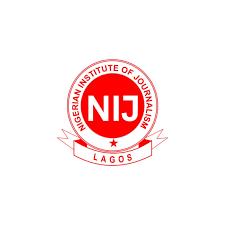Economics Keypoints: Factors of Production and their Theories; This study material is suitable for students sitting for the following exams: JAMB, WAEC, NECO, GCE, IJMB, and JUPEB. Factors of production refer to the resources necessary for the production of goods and services in an economy. These factors include land, labor, capital, and entrepreneurship.
Study other economics keypoints here
Understanding the types, features, rewards, determination of wages, interest, and profits, various theories associated with these factors, factor mobility, efficiency, unemployment, and its solutions are crucial in comprehending how an economy operates.
a. Types, Features, and Rewards of Factors of Production
- Land: This encompasses all natural resources available for production, such as agricultural land, water, minerals, and forests. The reward for using land is rent, which is the payment made to landowners for the use of their land.
- Labor: It represents the human effort, skills, and knowledge contributed to the production process. Wages serve as the reward for labor.
- Capital: This includes man-made resources used in production, like machinery, tools, buildings, and infrastructure. The reward for capital is interest or profits.
- Entrepreneurship: Entrepreneurs organize and manage the other factors of production. Their reward comes in the form of profits for taking risks and combining the other factors effectively.
Example: In a manufacturing unit, land provides the space for the factory, labor is involved in the production process, capital includes machinery used, and entrepreneurs manage and organize the production activities. Each factor receives its respective reward.
b. Determination of Wages, Interest, and Profits
- Wages: Determined by the demand and supply of labor in the market. Higher demand for specific skills or professions usually leads to higher wages.
- Interest: Determined by the demand and supply of capital. Interest rates rise when the demand for capital exceeds its supply.
- Profits: These are the returns earned by a business owner after deducting all costs. Profits fluctuate based on market conditions, innovation, and competition.
Example: When there’s a shortage of skilled workers in the IT industry, the wages for IT professionals tend to increase due to high demand.
c. Theories: Marginal Productivity Theory of Wages and Liquidity Preference Theory
- Marginal Productivity Theory of Wages: This theory suggests that wages are determined by the marginal productivity of labor. If a worker contributes more to production, they will receive higher wages.
- Liquidity Preference Theory: This theory, proposed by John Maynard Keynes, explains that interest rates are determined by people’s preference for liquidity (cash) over other assets.
d. Factor Mobility and Efficiency
- Factor Mobility: Refers to the ease with which factors of production can move between different uses or locations. High factor mobility enhances efficiency in an economy.
- Efficiency: Achieved when factors of production are utilized optimally to produce the maximum possible output.
Example: Skilled labor being able to move from one industry to another easily increases factor mobility, leading to more efficient resource allocation.
e. Unemployment and Its Solutions
- Types and Causes of Unemployment in Nigeria: Includes structural, frictional, cyclical, and seasonal unemployment caused by factors such as lack of skills, mismatch between jobs and qualifications, economic downturns, and seasonal variations in industries.
- Solutions to Unemployment in Nigeria: Solutions may involve education and skill development programs, investment in infrastructure and industries, promoting entrepreneurship, and implementing effective labor market policies.
Example: The Nigerian government investing in vocational training programs to bridge the skills gap and reduce unemployment among the youth.
Conclusion Understanding factors of production, their theories, determination of rewards, factor mobility, efficiency, unemployment, and potential solutions is crucial in comprehending the dynamics of an economy and formulating effective policies for sustainable growth and development.












